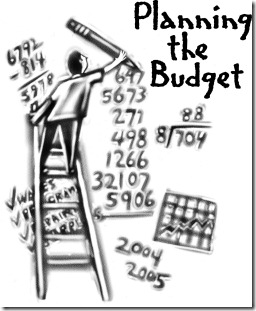When was the last time you developed a budget for your business? I’m not talking about numbers scrawled on a legal pad, or a white board, or guesstimates on a cocktail napkin, but a real budget that truly reflects your business’s current operations, your goals, and your strategy to promote growth in the future.
Small business owners are notorious for not operating with a real budget. Sure, they understand what the general numbers look like and where their operation stands in terms of expenses and income, but to really build your business you need a budget that does more than reflect where you have been. It has to show where you are going. Your budget is a critical part of your business blueprint for success. It might make it easier (and more palatable) to think of budgeting as profit planning. If you have a profit plan in place, then you can truly track your income and expenses in a fashion that gives you a clear plan as to how to increase your revenues and where to cut your overhead.
 Tracking profits and losses is a simple approach, and most business owners have a firm handle on their P&L. However, a P&L or income statement is a historical document; it shows you where you have been, not where you are going. Once you engage in true profit planning, you will have a budget that shows you if your business is on track for growth and if you are achieving the milestones toward your ultimate profit goal. True budgeting allows you to do cash planning that gives you a new kind of intelligence about your operations, which in turn gives you greater control.
Tracking profits and losses is a simple approach, and most business owners have a firm handle on their P&L. However, a P&L or income statement is a historical document; it shows you where you have been, not where you are going. Once you engage in true profit planning, you will have a budget that shows you if your business is on track for growth and if you are achieving the milestones toward your ultimate profit goal. True budgeting allows you to do cash planning that gives you a new kind of intelligence about your operations, which in turn gives you greater control.
Business owners also should understand the difference between an operating budget and a cash flow budget. The operating budget is your blueprint for success, allowing you to set financial goals and map your progress against those goals. A cash flow budget lets you track how much money you have on hand to pay your expenses. More businesses fail because of poor cash flow, not lack of profitability. If you can’t manage your cash to pay critical expenses like rent and payroll, then pending receivables won’t do you any good, no matter how much you accumulate on paper.
The budgeting process will help you identify weaknesses in your operation. Can you increase sales? Where can you cut operational costs? Are collections holding you back? The variables that can help you build your business will become obvious once you crunch the numbers. If you think you are going to see increases in sales or changes in expenses, forecast it and put it in your budget. Don’t worry about getting it perfect. It’s your best estimate to create a baseline for your business’s performance. At the end of the month look at the numbers to see how you did. Look at where you missed and where you exceeded expectations. Adjust your budget to reflect new things you have learned and what you are going to do differently. Review both your budget variance report and budget versus actual report.
In the next blog post, we’ll review the steps to consider when creating a budget.

